Day and Night Creams
Over the years a number of methods have been used to convince women to buy a range of skin-care cosmetics, rather than one that was all-purpose. One of the earliest marketing techniques used by cosmetic companies was to suggest that a cream applied during the day needed be different to one used at night.
Beauty routines
The idea of applying a skin cream overnight is an old one, in part based on the idea that the skin is more capable of repairing itself at night than during the day.
Every woman who is wise will pay attention to the needs of her complexion at bed-time, because the night is the period when Nature is most able to repair the ravages of time and circumstance.
(Browning, 1898, p. 134)
Applying a cream in the morning, to protect the skin from exposure to the elements when venturing out, made sense and, if a cream helped repair the skin, then applying it more than once also seemed reasonable. The most convenient time for women to do this was during their morning and evening ablutions.
Leaving aside those special skin preparations recommended by early ‘complexionists’ for blackheads, pimples and other skin blemishes, the commonest skin cream used in morning and evening skin-care routines in the late nineteenth and early twentieth century was cold cream.
Rough skins, from exposure to the wind in riding, rowing, or yachting, trouble many ladies, who will be glad to know that an application of cold cream or glycerine at night, washed off with fine carbolic soap in the morning, will render them presentable at the breakfast-table, without looking like women who follow the hounds, blowzy and burned. The simplest way to obviate the bad effects of too free sun and wind, which are apt on occasion to revenge themselves for the neglect too often shown them by the fair sex, is to rub the face, throat, and arms well with cold cream or pure almond-oil before going out.
(The ugly girl papers, 1874, pp. 79-80)
Cold creams were greasy so were generally unsuitable for use during the day as they tended to ‘shine’, a condition many women with oily skins covered with powder. This problem was ameliorated by the introduction of stearate or vanishing creams. These first appeared in the 1890s and, by 1920, they had became widely available.
Of all the skin creams which have been introduced during the past few years, the foremost place is undoubtedly taken by those which are variously described as Day Creams, Snows, Foams and Vanishing Creams.
(Poucher, 1926, p. 35)
As more cosmetic companies began to add a vanishing cream to their skin-care range, differences in the way the two creams were used gradually became established. Cold creams could be employed as a cleanser at night to remove the grime of the day, while vanishing creams were used as a skin protectant and powder base during the day.
For cleansing and massaging a cold or grease cream is a necessity.
… Pond’s Cold Cream is made of the purest ingredients, especially chosen for their softening and cleansing values. It has an oil base and is intended for night use.
… Pond’s Vanishing Cream was especially formulated to afford a constant protection and refining influence on the skin. It is quickly absorbed by the skin, and forms a fine invisible covering.(Pond’s advertisement, 1916)
See also: Cold Creams and Vanishing Creams
In the early twentieth century – when the cosmetic market was a lot simpler than it is today – some cosmetic companies had only two creams in their skin-care range – a cold cream and a vanishing cream – and distinguished between them by calling their vanishing cream a ‘day’ cream and their cold cream a ‘night’ cream. The sale of one cream helped to sell the other, a process generally known as companion selling.
One sale therefore helps and even demands the other. All that remains is to stress the importance of having both creams of identically the same perfume. Women readily appreciate this, knowing how easy it is for one perfume to be killed by another with which it is not “sympathetic.”
(Chemist and druggist, 1936)
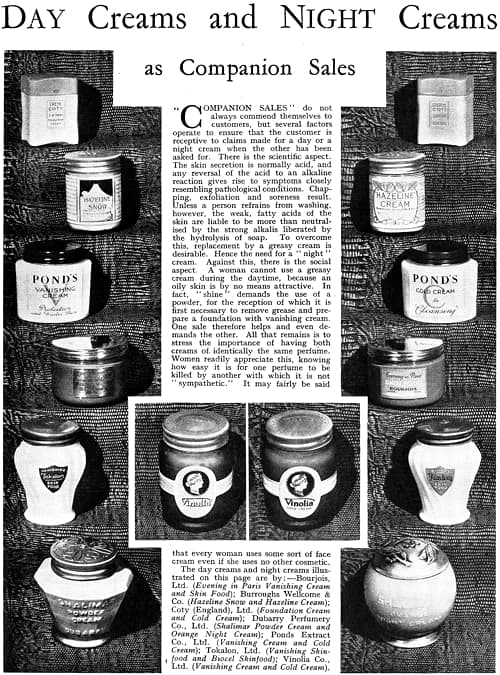
Above: 1936 Day Creams and Night Creams as Companion Sales. The day and night creams illustrated are from the top: Coty (England), Ltd. (Foundation Cream, and Cold Cream); Burroughs Wellcome & Co. (Hazeline Snow, and Hazeline Cream); Ponds Extract Co., Ltd. (Vanishing Cream, and Cold Cream); Bourjois, Ltd. (Evening in Paris Vanishing Cream, and Skin Food); Tokalon, Ltd. (Vanishing Skin Food, and Biocel Skin Food); and Dubarry Perfumery Co., Ltd. (Shalimar Powder Cream, and Orange Night Cream); with Vinolia Co., Ltd. (Vanishing Cream, and Cold Cream) in the centre.
Many cosmetic companies stuck with the simple distinction between cold/night creams and day/vanishing creams but this situation was muddied as the skin-care market became more sophisticated. In the 1920s, cosmetic companies were increasingly forced to make provision for skin types – a concept developed by Beauty Culture and proselytised by salon-based firms like Elizabeth Arden, Helena Rubinstein, and Dorothy Gray – and this affected how many firms promoted their skin-care creams. A good case in point can be seen by looking at the skin-care range of the Pompeian Manufacturing Company.
Pompeian Manufacturing Company
Pompeian started out with a single product, Pompeian Massage Cream. When the company introduced a cold cream (1915) it badged it as a night cream and then called its new vanishing cream (1917) a day cream. This meant that Pompeian customers could massage their face with Pompeian Massage Cream, cleanse their skin at night with Pompeian Night Cream, and protect their face and hold powder on it during the day with Pompeian Day Cream.
In the 1920s, when the company began making allowances for ‘dry’ and ‘oily’ skin types, Pompeian started recommending that women with dry skin use Pompeian Night Cream during the day, making the distinction between night and day less relevant.
Pompeian Night Cream can be your best servant during the winter. Use it for cleansing—not only your face and neck, but your hands and your shoulders too, for the skin on these parts suffers the same dryness as your face, and feels the cold and severity of the soap and water bath more severely during cold weather than at any other season. It will soften it and make it more pliable.
As a powder base. A dry skin should not use a day or vanishing cream, as this kind of cream is best for an oily skin; use Pompeian Night Cream as your powder base. Apply it lightly over your cleansed skin, wipe off after it has been well distributed, and you will find it a delightful foundation for your powder. …
Pompeian Day Cream should be used every time you cleanse your face, every time you go out of doors, every time you apply your powder. If you have a jar in a convenient place it becomes a habit to use a bit of this delightful, fluffy cream every time you sit at your dressing table.
There is a slight astringent quality in this vanishing Day Cream that makes it “firm up” the little loose surface muscles in your face, and that gives your skin a smoother appearance. Pompeian Day Cream is an incomparable base for your Pompeian Beauty Powder. It forms an adhesive foundation for your powder.
Pompeian Night Cream should be used to cleanse an oily skin. It softens the natural oily secretions and dissolves their unhealthy accumulation. Use it before or after your bath—it cleanses in a way that soap and water cannot. Remove with a soft cloth and finish with an ice rub or very cold water.(Pompeian advertisement, 1924)
See also: Pompeian Manufacturing Company
When you take skin types and other skin differences into account you can see why the larger salon-based companies – with their extensive skin-care ranges – were less likely to use ‘day’ or ‘night’ in their product names and why the practice of naming skin-creams as day creams or night creams largely fell out of favour. Using functional names such as Skin Food, Tissue Cream, Sports Cream, Dry Skin Cream, Foundation Cream, and Vitamin Cream allowed companies to promote and sell a wider range of specialist skin-care cosmetics.
Differences in formulation
The original cold creams were generally water-in-oil (W/O) emulsions whereas vanishing creams were of the oil-in-water (O/W) type. These night and day creams were therefore chemically distinct. However, water-in-oil formulations were also made for use during the day. These were popular in warmer climates as they did not easily dry out in their containers. Water-in-oil formulations were also used to make skin creams for clients with dry skin and as the base for skin creams that had oil-soluble ingredients, such as hormones. Creams used during the day therefore quickly moved away from only being made using stearate, vanishing cream formulas and became more chemically diverse.
See also: Hormone Creams, Oils and Serums
Similarly, although early night creams were generally made using a water-in-oil emulsion – a common way to make a good emollient cream – many night creams were soon being made as oil-in-water emulsions to make them fell less greasy. Additional ‘regenerating’ ingredients were also added to night creams to aid in skin repair – such as lanolin, hormones and vitamins – but these were also incorporated into many creams applied during the day.
As night creams were generally viewed as skin repairers, they were often formulated to be ‘richer’. The idea was not universal and night lotions were also found in some later skin-care ranges. Also, as any cosmetic chemist will tell you, a feeling of ‘richness’ can be generated by simply thickening the cream, something easily done by increasing its wax content or adjusting the types of fats and oils used.
Sunscreens
Chemical sunscreens were first used in skin creams in the late 1920s but were only found in sun lotions, sunburn and suntan creams at first. They were later incorporated into a wide variety of skin creams and lotions, as well as make-up, to provide everyday protection from ultra-violet (UV) radiation; an important functional difference between a cream applied during the day and one that is left on overnight. UV protection has become more important to modern skin-care cosmetics as it allows cosmetic companies to make an anti-ageing claim.
Modern day and night creams
A number of cosmetic companies continued to market some of their skin creams with night or day in the title and many of the old functional distinctions between them were still used in advertising – night creams revive and repair, while day creams protect and prevent – but there was no set rule.

Above: 1967 Charles of the Ritz Ritual Night Treatment.
Night creams were often formulated to appear ‘richer’ and both day and night creams were often claimed to moisturise and regenerate. Lotion formulations were also common, as were serums. Surprisingly, some cosmetics designed for use during the day did not include a UV protectant, the main justification for a day/night distinction.
First Posted: 1st June 2015
Last Update: 9th April 2025
Sources
Browning, H. E. (1898). Beauty culture. London: Hutchinson & Co.
How to attain and retain beauty. (1935). London: Hazell, Watson & Viney.
Peiss, K. (2007). Hope in a jar: The making of America’s beauty culture. New York: Henry Holt and Company.
Poucher, W. A. (1926). Eve’s beauty secrets. London: Chapman & Hall, Ltd.
The ugly girl papers; or hints on the toilet. (1874). New York: Harper & Brothers.
Wells, F. V., & Lubowe, I. I. (1964). Cosmetics and the skin. New York: Reinhold Publishing Corporation.
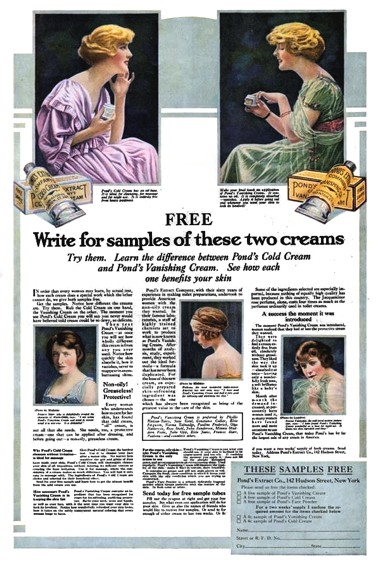
1916 Pond’s Cold Cream and Vanishing Cream.
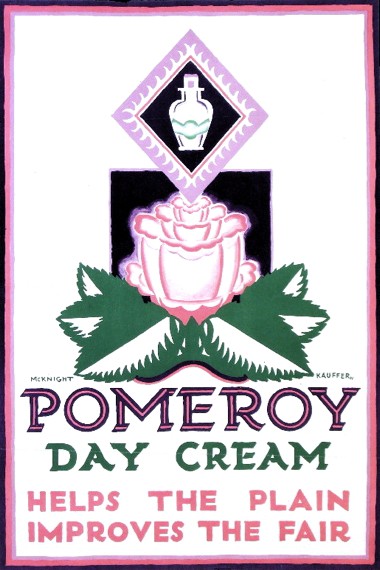
1922 Pomeroy Day Cream.

1925 Pompeian Night Cream and Day Cream.
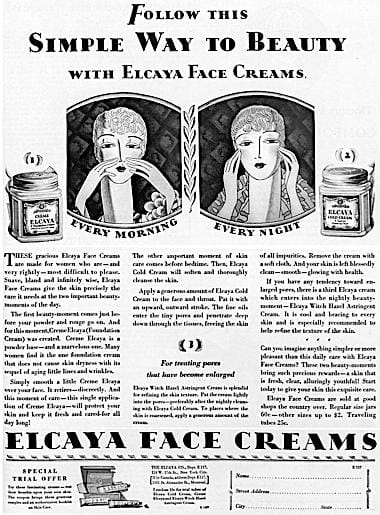
1927 Creme Elcaya (day), Elcaya Cold Cream (night).

1927 Dubarry Day Creams (Vanishing).

1928 Tangee Day Cream and Night Cream.
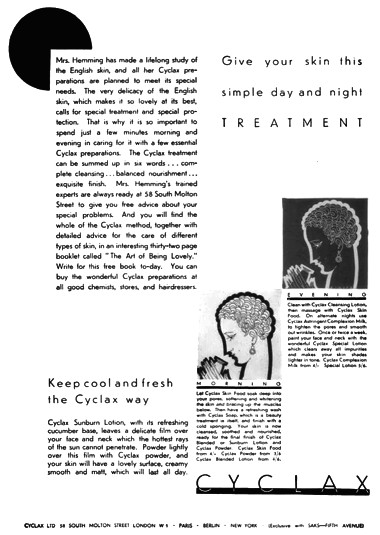
1929 Cyclax day and night treatments.
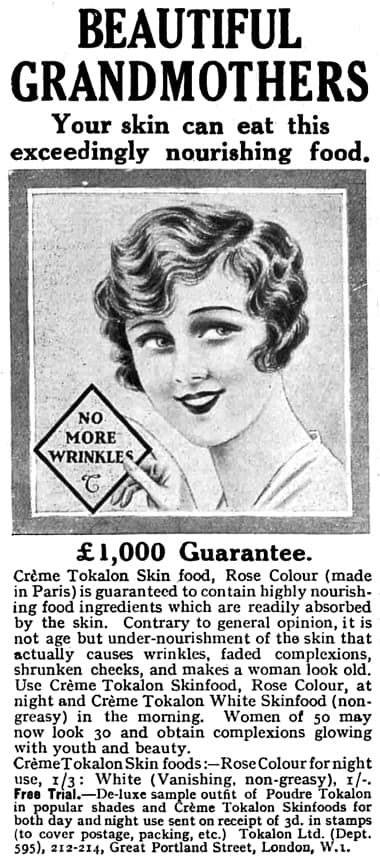
1929 Crème Tokalon Skin Food. Rose Colour at night, White (vanishing, non-greasy) during the day.
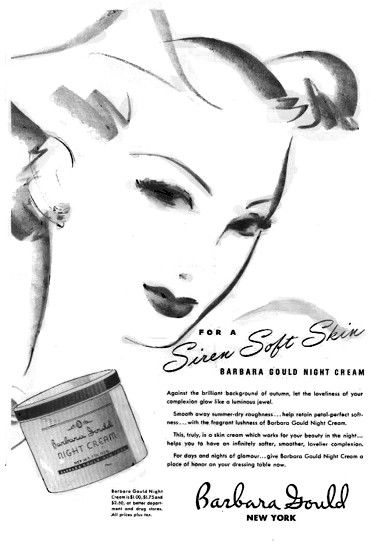
1942 Barbara Gould Night Cream.

1964 Elizabeth Arden Ardena Liquid Night Cream.

1971 Dorothy Gray ‘Pretty-to-Bed’ Cream.
